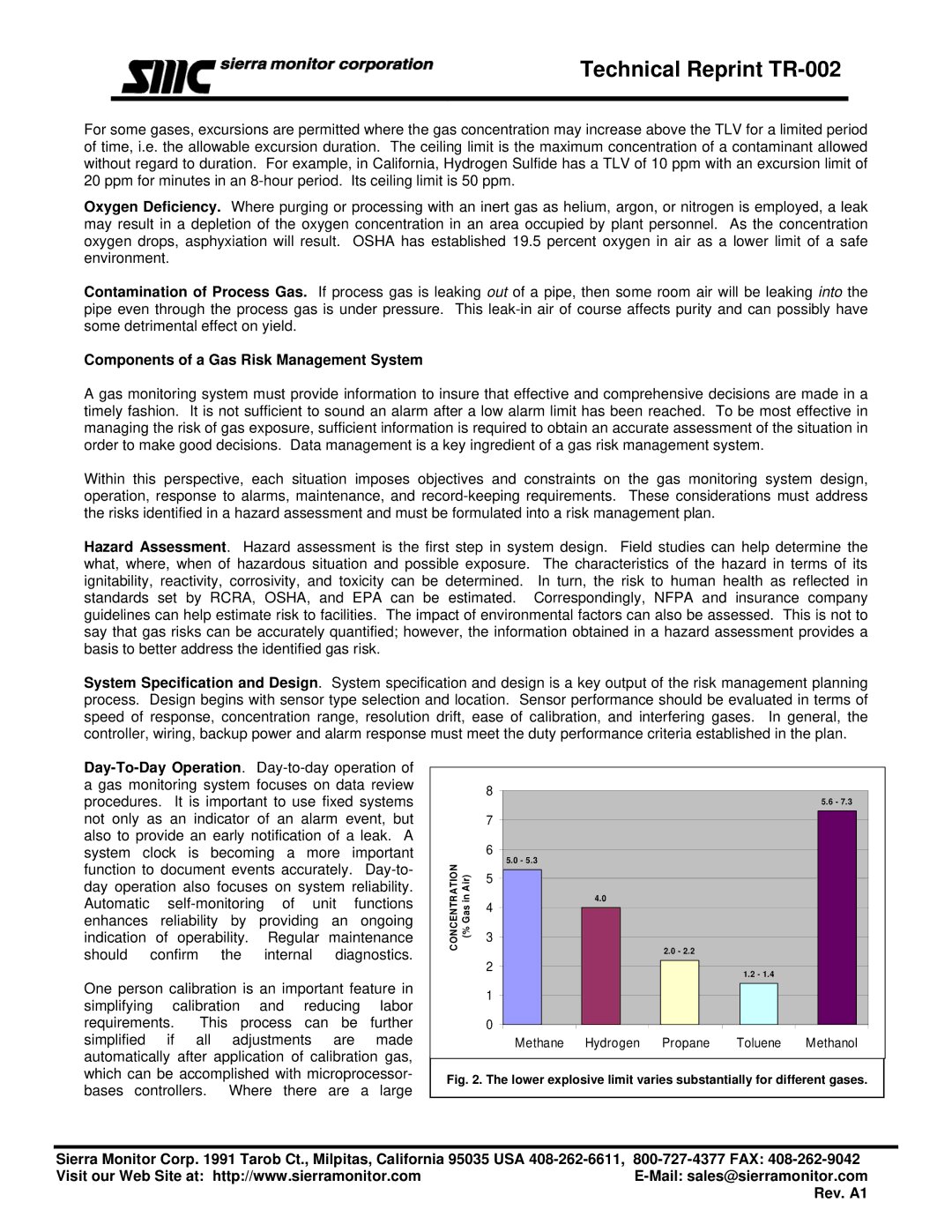TR-002 specifications
Sierra Monitor Corporation's TR-002 is an advanced wireless monitoring device designed for various industrial and commercial applications. This versatile device excels in providing comprehensive environmental monitoring and control, ensuring safety, efficiency, and compliance with regulations.One of the standout features of the TR-002 is its robust sensor capabilities. The device is equipped with multiple sensors capable of detecting gases, temperatures, humidity levels, and other environmental parameters. This multi-sensor approach allows users to monitor a range of conditions in real-time, facilitating proactive management of their facilities.
The TR-002 employs cutting-edge wireless communication technology, enabling seamless integration into existing networks. It supports several communication protocols such as LoRa, Zigbee, and Wi-Fi, ensuring flexibility in deployment. This wireless capability allows for easy installation in hard-to-reach areas without the need for extensive wiring, saving time and resources.
Additionally, the TR-002 boasts a user-friendly interface, providing operators with intuitive access to data and analytics. The device's dashboard allows users to visualize real-time readings and historical trends, aiding in informed decision-making. Alarm notifications and alerts can be configured to notify personnel of any anomalies, thereby enhancing safety protocols.
The TR-002 is designed with durability in mind, featuring an industrial-grade enclosure that protects against harsh environmental conditions. This rugged construction makes it suitable for various applications, including manufacturing plants, warehouses, and outdoor environments.
Another significant characteristic of the TR-002 is its scalability. Whether monitoring a single location or managing multiple sites, the device can be easily expanded and adapted to meet the growing needs of a facility. This scalability is complemented by a cloud-based data management system that allows for centralized monitoring and control from anywhere in the world.
In conclusion, Sierra Monitor Corporation's TR-002 is a state-of-the-art wireless monitoring solution that combines advanced sensing technology with flexible communication options. Its durability, user-friendly interface, and scalability make it an invaluable asset for organizations looking to enhance their monitoring capabilities, ensure safety, and optimize operational efficiency. With the TR-002, businesses can take proactive steps towards maintaining ideal environmental conditions and compliance with industry standards.

